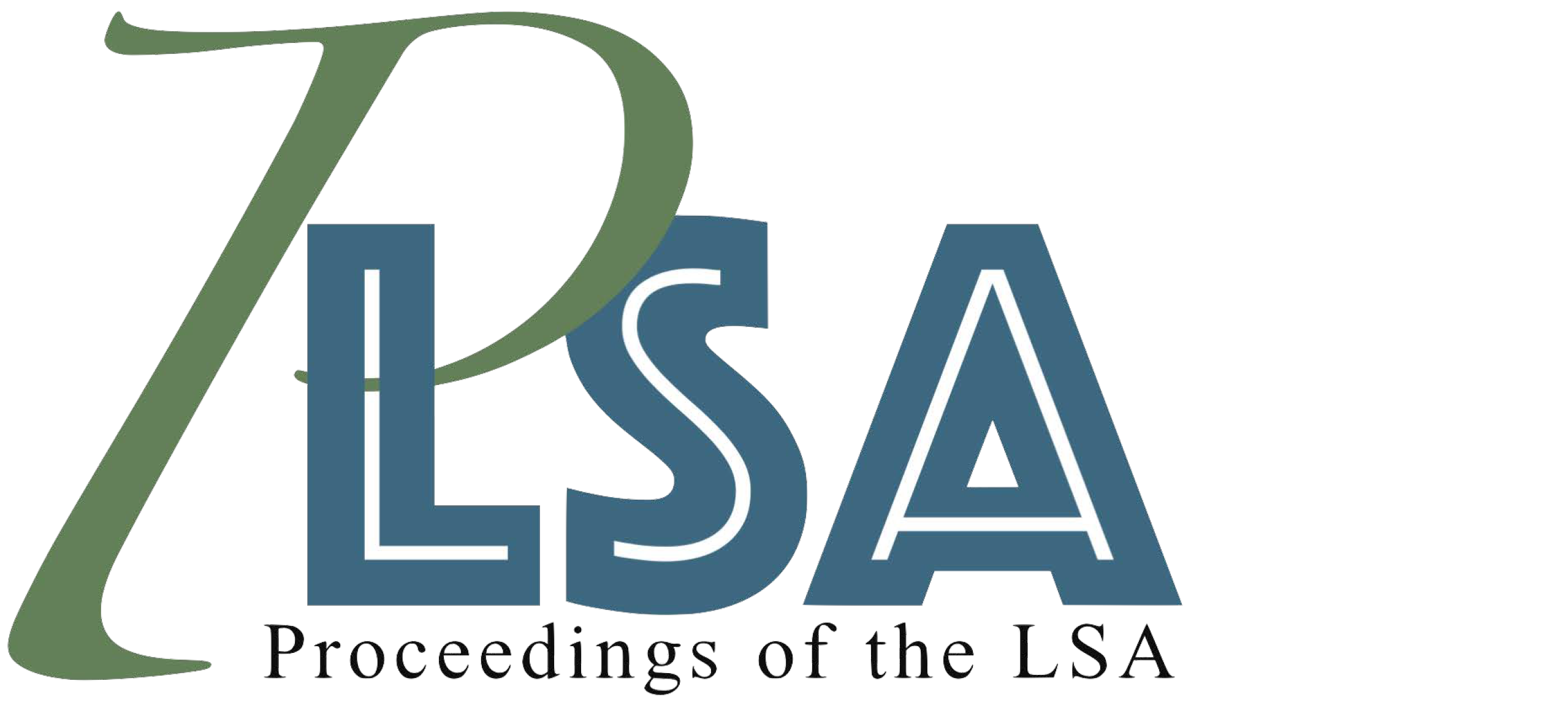Revisiting the restrictive/appositive distinction in Mandarin relative clauses: The confound of demonstratives
DOI:
https://doi.org/10.3765/plsa.v4i1.4516Keywords:
Mandarin relative clauses, demonstratives, restrictive, appositiveAbstract
This paper revisits the often-claimed correlation between the restrictive/appositive distinction in Mandarin relative clauses (RC) and their pre-/post-demonstrative position (Chao 1968; Huang 1998; Lin 2003 a.o.). We show that different uses of the demonstrative should be controlled for in establishing the correlation, a novel perspective which reconciles the conflicting claims noted in the literature. In particular, we argue that (i) only when the demonstrative is used deictically, the pre-/post-demonstrative position makes a difference such that pre-demonstrative RCs can only be appositive while post-demonstrative RCs can be either appositive or restrictive; and (ii) when the demonstrative is used anaphorically, the position of RCs does not determine its appositive/restrictive status. The new patterns can be accounted for by extending some analyses of strong definites (Elbourne 2005; Schwarz 2009; Jenks 2018) to Mandarin demonstratives, recognizing a structural distinction between the deictic use and the anaphoric use. The current proposal has implications for studies on demonstratives.Downloads
Published
2019-03-15
Issue
Section
Articles
License
Published by the LSA with permission of the author(s) under a CC BY 4.0 license.
How to Cite
Sun, Yenan, and Jackie Yan-ki Lai. 2019. “Revisiting the Restrictive Appositive Distinction in Mandarin Relative Clauses: The Confound of Demonstratives”. Proceedings of the Linguistic Society of America 4 (1): 28:1–14. https://doi.org/10.3765/plsa.v4i1.4516.
